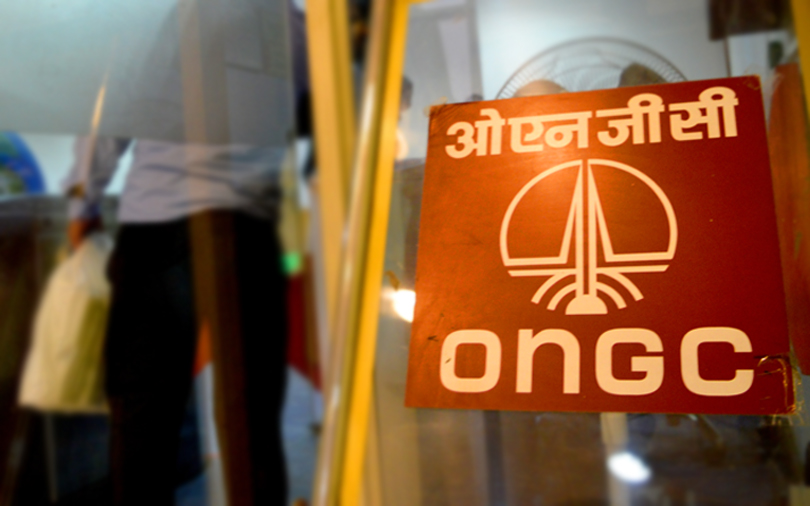ONGC, India’s largest oil and gas company, is looking to generate electricity from wind on its extensive offshore holdings as part of its renewable energy portfolio, according to its chairman Mr. Subhash Kumar. In both the Arabian Sea and the Bay of Bengal, the Oil and Natural Gas Corporation (ONGC) owns oil and gas fields. That deep-sea experience is now being used to set wind turbines that could generate electricity that could be linked to land.
In the company’s most recent annual report, Mr. Kumar stated, “A study for a pilot project in Offshore Wind has already been commissioned for examining the prospects in this specialised market.”
Last year, ONGC signed an MoU with India’s largest electricity generator NTPC to explore putting up offshore wind projects along with the 7,600-km coastline.
Offshore wind turbines are about twice as efficient as onshore windmills. Offshore turbines, on the other hand, have a higher cost per MW due to the necessity for stronger construction and foundations in maritime environments.
The government has set a goal of installing 5 GW of offshore wind by 2022 and 30 GW by 2030.
Mr. Kumar stated that ONGC is looking into renewable energy potential both in India and abroad.
“We added another 6 MW of solar capacity, bringing our total installed solar energy capacity to more than 30 MW,” he stated. “Our total installed renewable capacity has surpassed 325 MW, and we still have a long way to go as we aim for 10 GW of installed renewable capacity by 2030.”
This goal is part of the company’s long-term strategy, Energy Strategy 2040.
“In Ladakh, we’ve also started the country’s first geothermal energy project,” he added.
Mr. Kumar stated that the energy sector is critical to the resurgence of global economic activity following the pandemic-induced downturn.
However, “Safer, more sustainable, and less energy-intensive business models will be required in the future. All future energy business planning and strategies must include sustainability as a core concept” he stated
In order to remain relevant in tomorrow’s energy ecosystem, ONGC would “further sharpen” its attention on climate-related parts of its operations, he said.
“To realise that ambition, we are strategically and meaningfully expanding our footprints beyond our main (oil and gas) exploration and production activities, while simultaneously taking all necessary steps to make our core activities more sustainable and energy-efficient.”
With the flow of oil from the Ashokenagar-1 well, the business brought the country’s eighth producing basin, the Bengal Basin, online in the fiscal year 2020-21, he said. “Despite low and unpredictable oil prices, exploration continues to make steady progress.”
Last fiscal year, ONGC made ten new discoveries and was able to successfully monetise 12 previous discoveries.
“Our track record lends credence to the improving commerciality of ONGC’s exploratory efforts, while we have consistently replaced more than what we produced for the last 15 years, fast-tracked monetization of hydrocarbon discoveries in recent years, our track record lends credence to the improving commerciality of ONGC’s exploratory efforts.” he said.
Apart from the prolific and producing basins, the National Oil Company (NOC) is increasing its exploration footprints in virgin or under-explored areas, and the data acquired from these endeavours will improve the nation’s hydrocarbon prospects.
While ONGC’s domestic oil and gas production fell to 45.35 million tonnes of oil and oil equivalent (mmtoe) gas in FY21 from 48.25 mmtoe the previous fiscal, the company “remains optimistic of a turnaround in output in FY’22 as the threat of further disruptions resembling those in the first half of 2020 has abated a bit and the industry readjusts its modus operandi to this ‘new normal’ of sustaining output.”
Domestic output is expected to exceed 60 mmtoe by 2024, thanks to flow from the KG deepwater fields in eastern offshore and Heera in shallow water in western offshore, according to Mr. Kumar.
You may also like
-
Trade Connect E-platform For Exports Is Single Window, Fast, Accessible And Transformational: Shri Piyush Goyal
-
Dot Simplifies Approval Processes For Telecom Licenses And Wireless Equipment
-
Coal Production and Supply Trends on Positive Trajectory
-
Union Minister To Release Booklets On Promotion Of Indigenous Species & Conservation Of States Fishes
-
2nd India-Japan Finance Dialogue held in Tokyo on 6th September, 2024
